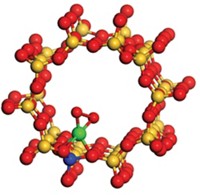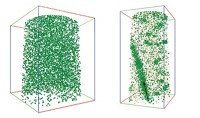Advertisement
Grab your lab coat. Let's get started
Welcome!
Welcome!
Create an account below to get 6 C&EN articles per month, receive newsletters and more - all free.
It seems this is your first time logging in online. Please enter the following information to continue.
As an ACS member you automatically get access to this site. All we need is few more details to create your reading experience.
Not you? Sign in with a different account.
Not you? Sign in with a different account.
ERROR 1
ERROR 1
ERROR 2
ERROR 2
ERROR 2
ERROR 2
ERROR 2
Password and Confirm password must match.
If you have an ACS member number, please enter it here so we can link this account to your membership. (optional)
ERROR 2
ACS values your privacy. By submitting your information, you are gaining access to C&EN and subscribing to our weekly newsletter. We use the information you provide to make your reading experience better, and we will never sell your data to third party members.
Environment
Catalysis At PNNL
National lab leverages its assets and diverse expertise for basic and applied research
by Mitch Jacoby
November 19, 2007
| A version of this story appeared in
Volume 85, Issue 47

Pacific Northwest National Laboratory hasn't deliberately kept its catalysis prowess a secret. It just kind of turned out that way. But these days the lab is on a mission to spread the word about its highly successful catalysis programs.
Tucked away in southeastern Washington in the quiet town of Richland, PNNL has been the site of focused efforts in catalysis research for decades. "Catalysis goes back a long way here," says Charles H. F. (Chuck) Peden, interim director of the lab's Institute for Interfacial Catalysis (IIC). "We've had major programs in applied catalysis since the 1970s," he says. "They were big efforts but almost unknown outside of the lab."
The lab's strength in catalytic chemistry wasn't kept under wraps for reasons of national security or to prevent leaks of sensitive information. Rather, as Peden explains, in the early days, catalysis researchers at PNNL were focused on applied projects that simply didn't lend themselves to going to scientific meetings and conferences and reporting on the results. "Plenty of reports describing that work were written for the Department of Energy," Peden insists, "but the catalysis world hardly heard about any of it."
Nonetheless, word that PNNL is a good place to study catalysis got around, and the lab managed to build research groups with expertise in several areas. Among those are fundamental catalysis science and the use of a variety of computational and experimental tools and techniques including surface spectroscopy. Also included are automobile emissions cleanup, biomass conversion, and catalytic microreactor development. The microreactor technology has been commercialized by Ohio-based Velocys, which markets the energy-efficient and space-saving chemical reactors to companies in the energy and chemicals sectors.
In Peden's view, one of the key factors that helped raise the lab's profile was the success of the William R. Wiley Environmental Molecular Sciences Laboratory at PNNL. EMSL is a large national user facility at which a host of experimental and computational resources is available to the public—on a peer-reviewed proposal basis—for studying a broad range of molecular science topics, many of which are essential to catalysis.
The Richland laboratory was a natural venue for EMSL because molecular sciences have been a strong suit of PNNL since day one.
Forty years ago, the lab was established to address the nuclear chemistry and chemical engineering research needs that stemmed from production of plutonium at the adjacent DOE Hanford Site, says Douglas Ray, PNNL associate laboratory director for fundamental and computational sciences. Today, only about 15% of PNNL's operations are devoted to chemical separations of radioactive materials and related topics, he says. Yet PNNL remains firmly rooted in the molecular sciences.

"One of the features that distinguishes PNNL from the other DOE national labs is the focus on chemistry and chemical engineering," Ray stresses. In contrast, physics dominates the scientific disciplines at the other DOE labs. Among PNNL's scientists and engineers, some 40% were trained in the molecular sciences, including chemistry, chemical engineering, biochemistry, geochemistry, and related areas, Ray notes. Peden adds that the lab's strength in catalysis, an interdisciplinary molecular science, "follows naturally from that chemistry foundation."
With talented scientists and high-quality tools for catalysis research all concentrated at PNNL, some staff members have advocated that the lab exploit its assets and boost its catalysis research and development program to a higher level. The enthusiasts propose the establishment of a national catalysis institute to address energy and environmental issues and other scientific challenges of national importance.
Across the catalysis community, from industry to academia to national labs, some researchers argue that a national catalysis institute, or what might be described in government parlance as a center of excellence, is indeed needed to help solve major problems in catalysis, Peden says. And judging by the buzz in the field, he adds, scientists believe many of the components necessary to establish that type of center are already in place at PNNL.

In an effort to jump-start the lengthy official process needed to build a national center of excellence, PNNL invested $8 million of internal discretionary funds to help launch IIC in 2005. The funds were used to broaden the lab's catalysis expertise by hiring specialists in homogeneous (solution phase) catalysis, catalyst synthesis, and other areas; to develop new lab instruments; and to appoint the institute's first director, University of Texas, Austin, chemistry professor John M. (Mike) White, who died suddenly at the end of August (C&EN, Oct. 8, page 59). As it stands now, the institute, a virtual entity, counts roughly 70 PNNL staff members among its ranks.
Building the institute from its present state into a top-notch national center of catalysis excellence would require new or additional government support to bolster existing research programs and to support new programs. Government-sponsored projects now account for roughly $16 million per year in catalysis-based research at PNNL, according to lab websites. Nearly all of those funds are provided on an individual project basis. In Peden's view, that per-project-funding arrangement limits opportunities for lab staff to collaborate with others at PNNL and in academia and industry.
In the funding model, the lab is seeking to procure, in addition to the programs already in place, separate government funds that would support an infrastructure and operations budget. Such an arrangement would provide catalysis scientists in smaller laboratories with an opportunity to work at the institute using discovery and analysis tools that are too expensive for small labs to purchase, Peden notes. And he says it would make the institute's expertise in catalysis available for collaboration to the greater catalysis R&D community.

Given an overall lack of energy security and a growing dependence in the U.S. on foreign energy sources, "the time is right to establish a national catalysis institute," adds Jud W. Virden, PNNL deputy associate laboratory director for energy science and technology.
Like Virden, Ray believes that catalytic chemistry is poised to play a pivotal role in helping solve vexing energy and environmental problems in both national and international contexts (C&EN, Sept. 3, page 40). "We'd like the institute to become a vehicle through which we build new capabilities to measure, model, and make catalysts and catalytic processes for the future," Ray says. He notes that PNNL continues to work toward that goal.
In addition to obtaining financial support from government sources, the national lab benefits from a unique-to-PNNL funding mechanism that enables it to offer contract-type research services to industry partners. Earlier this year, the catalysis institute held an open house to acquaint potential partners from chemical and technology companies with the lab's R&D capabilities—an unusually broad portfolio spanning fundamental to highly applied work.
In PNNL's automobile emissions lab, for example, researchers probe catalytic reaction mechanisms on single-crystal model catalysts with surface analysis tools. In the same lab, full-sized automobiles and stand-alone engines provide real-world data by which to evaluate the performance of catalytic converters.
Aleksey Yezerets, a technical adviser with Indiana-based engine manufacturer Cummins, was one of the open-house attendees who is intimately familiar with those broad capabilities. Yezerets and coworkers teamed with PNNL to develop catalyst technology for controlling emissions of nitrogen oxides and particulates from diesel engines. That partnership led to the emissions-control system used in 2007 heavy-duty Dodge Ram pickup trucks.
"For years, we've benefited from PNNL's knowledge, expertise, and specialized tools," Yezerets says. "They're trusted partners."

Another area of concentrated catalysis research at PNNL is biomass conversion. Senior scientist Conrad Zhang, staff scientist Johnathan E. Holladay, postdoc Haibo Zhao, and their coworkers take advantage of high-throughput-screening methods to optimize reaction conditions and to find effective catalysts that convert sugars and other biomass derivatives into valuable chemical intermediates such as 5-hydroxymethylfurfural (C&EN, June 25, page 8).
With this high-throughput approach, Zhang, postdoc Guosheng Li, and coworkers recently designed and built an apparatus that provides high-resolution Fourier transform infrared images and Raman spectroscopy data from multiple catalysts simultaneously while the catalysts are mediating surface reactions.
Numerous other high-end instruments across the PNNL campus stand ready to reveal subtle details of catalyst properties. In one such example, Peden and coworkers determined via ultrahigh magnetic field NMR methods that previously unobserved pentacoordinated Al3+ ions are hot spots for catalyst nucleation on γ-alumina (J. Catal. 2007, 251, 189). That material is widely used as a catalyst support in petroleum refining and automotive emissions control applications.
The catalyis community beyond PNNL is beginning to notice a success story unfolding in Richland. At Los Alamos National Laboratory, for example, senior research scientist R. Tom Baker says PNNL brought together good scientists with diverse backgrounds in order to assemble the kind of critical mass that's necessary for interdisciplinary catalysis research. "The vector at PNNL is very good," he says. He adds, "it certainly looks like they'll be moving forward in the next decade."





Join the conversation
Contact the reporter
Submit a Letter to the Editor for publication
Engage with us on Twitter